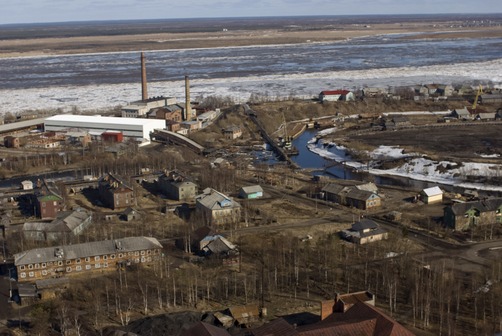Since the collapse of the Soviet Union in 1991, Russia’s richest have more than doubled their wealth. Yet a recent study by Moscow’s Higher School of Economics, (HSE), says that 60% of the country’s population is either no better off or poorer today than they were 20 years ago. The gap between Russia’s richest and poorest is widening while possibly intensifying class-based tensions.

In large cities like Moscow, Western capitalism has raised the standards of living for the top tier of Russian society. On the other hand, pensioners and those living is smaller cities are falling behind, disillusioned with the reform’s promise of a better life. During the Soviet-era, healthcare, education, and housing were subsidized by the government. These days, people are forced to spend a large percentage of their incomes on such services or do without. Also, pre-reform, the government provided jobs for its people so there was no unemployment and salaries were determined by the State. Today, according to the 2011 Russian Economic Report by The World Bank, high unemployment seems to remain a persistent problem in many Russian regions with some reaching as high as 47% and salaries now determined by the market.
Those most adversely affected are people living in small, single-factory towns known as monotowns. The Economic Report estimates that a sixth of Russia’s population lives in these regions that produce 40% of the country’s gross domestic product in such industries as manufacturing, fuels, metallurgy, food processing, timber, and pulp. However, as the economy changes and factories close down, Russians in monotowns are struggling to survive. Not only are they left with no other prospects for work, but they may also lose their social services and amenities because the main factory in each region has taken on the government’s previous role of providing health care, schools, heat, water, and electricity to the residents. Consequently, when a plant closes, there is no one left to deliver these services.
This was the case in Pikalevo, a monotown near Saint Petersburg. According to news reports, in 2009 the residents of Pikalevo blocked an important federal highway in protest against the town’s heat and water being shut off when the local factory closed its doors and stopped paying its bills. Other monotowns like Togliatti and Magnitogorsk have followed suit after Prime Minister Vladimir Putin intervened in Pikalevo to recoup outstanding wages due to the residents by the factory.
Yet in spite of the difficult labor market conditions in some parts of the country, Russia continues to mint a growing number of millionaires. Today, the country is ranked 16th worldwide in total millionaires according to research by Deloitte, one of the largest financial consulting companies in the world. Russia also ranks third in the number of billionaires with Moscow taking over New York’s spot as the world capital of billionaires. Deloitte’s study also estimates that “the number of millionaire households in Russia will grow from 375,000 to 1,205,000 between 2011 and 2020”.
What is important to remember is that majority of Russians living outside Moscow think of Muscovites as a separate category of Russian people who have better jobs, incomes, and lives than the rest. However, Muscovites, who have embraced capitalism, perceive the whole country as thriving. Andrew, a 41 year old business man who asked not to use his real name, emigrated from Russia to the United States in 2001. He grew up in the former Soviet Union in a city of Balashikha, just outside Moscow and saw the end of the Cold War and the struggles of a new economy. “When I left Moscow in 2001, the city was run down,” describes Andrew. He continues to travel regularly to Moscow to visit family and friends and has this to say, “Now people are much richer…The majority of the people living in Russia are living much better than before.”
Those most adversely affected are people living in small, single-factory towns known as monotowns.
Moscow has become home to many local and American franchise restaurants, designer stores, and supermarkets. Andrew points out that the biggest difference between then and now is the accessibility of goods. “Before, if you wanted to buy meat, there would be no meat to buy.” says Andrew, though he admits that the prices are much higher these days. He compares the cost of food to higher end grocery stores like Whole Foods. Still, when you consider that the monthly minimum wage in Russia has just been raised to 4,611 rubles or $165 USD, much of what is available is not necessarily affordable for many of the country’s citizens.
In an effort to boost the economy, Russia’s government enacted a stimulus package in the last couple of years that focused on single-factory towns and seniors by dramatically increasing unemployment benefits and pensions. While this may help quell the simmering unrest in monotowns across the country it is still uncertain how Russia will be able to close the social and economic divide in the future.
